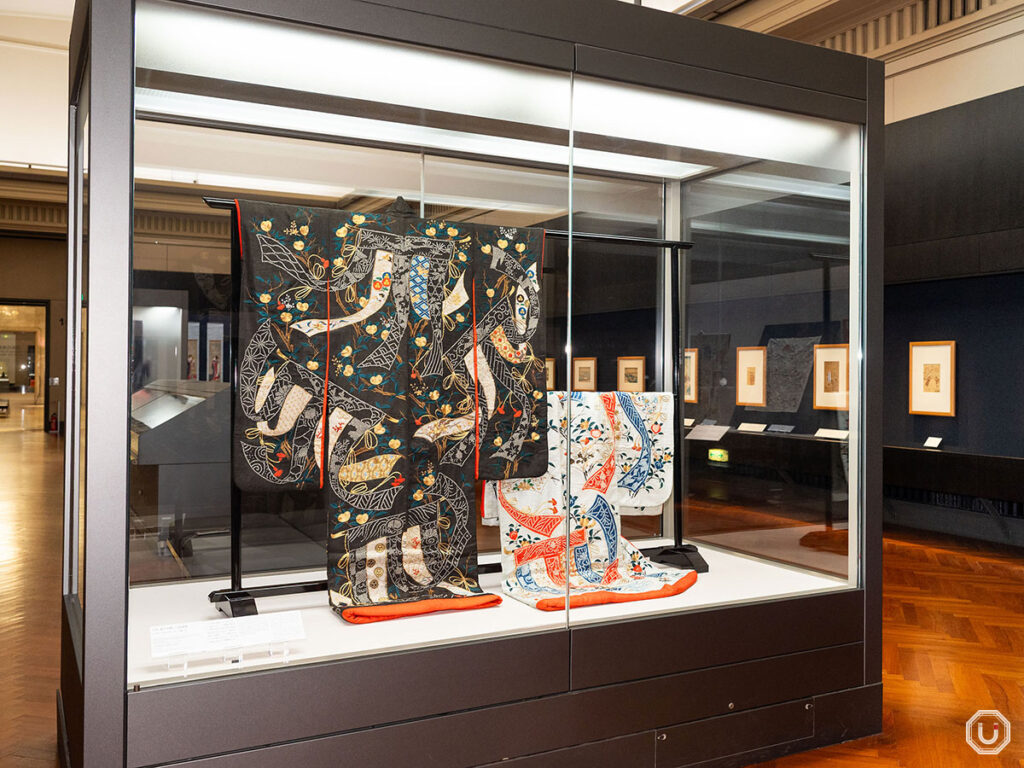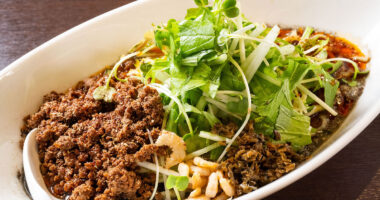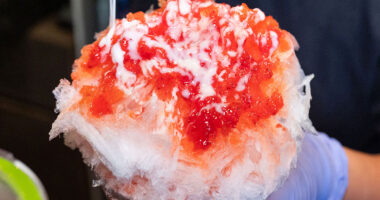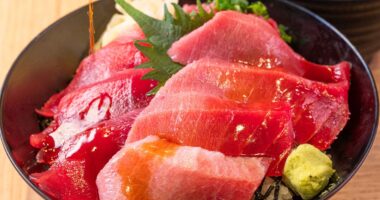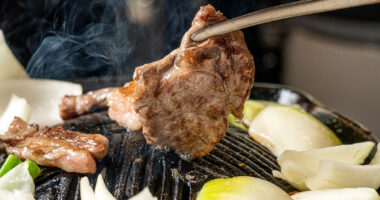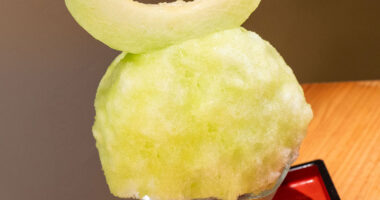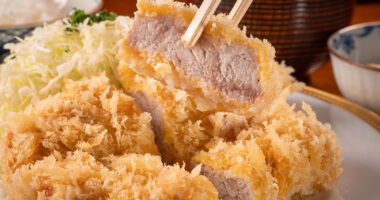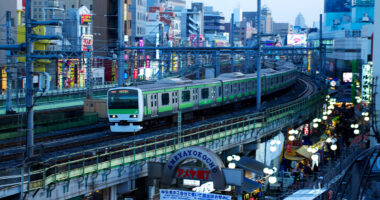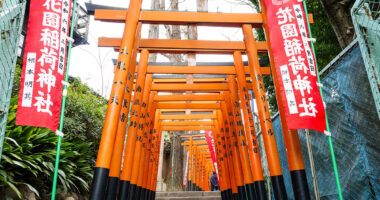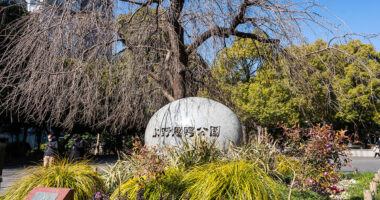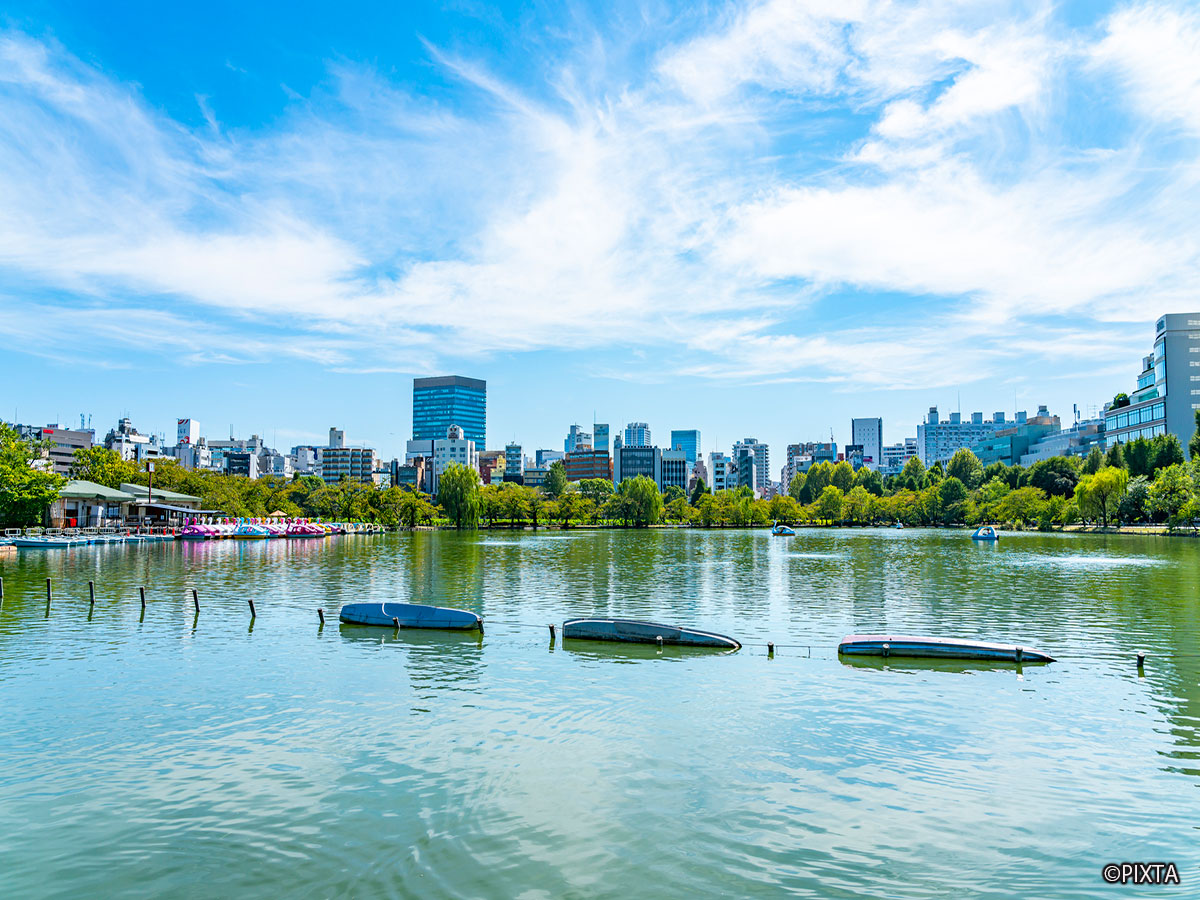Ueno, located in Taito-ku (Taito Ward), Tokyo, is often referred to as the Museum District. The reason for this can be found in “Ueno Onshi Park” (hereafter referred to as “Ueno Park”), which is known as one of Ueno’s foremost tourist destinations.
Museums and art galleries are scattered throughout the grounds of Ueno Park, all within walking distance. It’s the perfect place for a day of museum hopping.
Museums and art galleries in Ueno Park
Ueno Park offers a diverse range of museums, catering to a variety of interests.
Whether you’re looking to explore history, learn about scientific advancements, or immerse yourself in Japanese and Western art, you’re sure to find a museum that sparks your curiosity.
The National Museum of Nature and Science
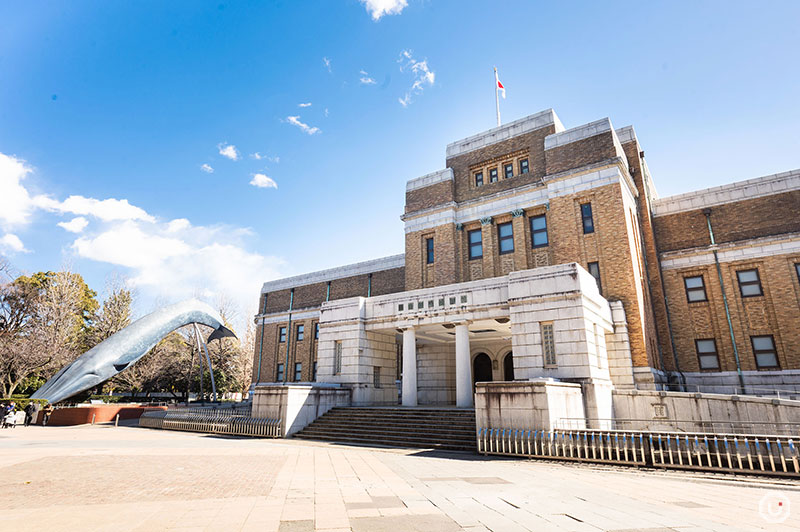
The life-sized Blue Whale statue installed on the left side of the National Museum of Nature and Science serves as a landmark
The National Museum of Nature and Science is Japan’s only national comprehensive science museum focusing on natural history and the history of science and technology. Founded in 1877, it is one of the oldest museums in Japan.
The museum consists of two main buildings: the Japan Gallery and the Global Gallery, displaying approximately 25,000 specimens and artifacts.
The Japan Gallery focuses on the theme “Nature of the Japanese Islands.” Exhibits explore the origins and natural environment of the Japanese islands, the evolution of life, the formation of the Japanese people, and the historical relationship between humans and nature.
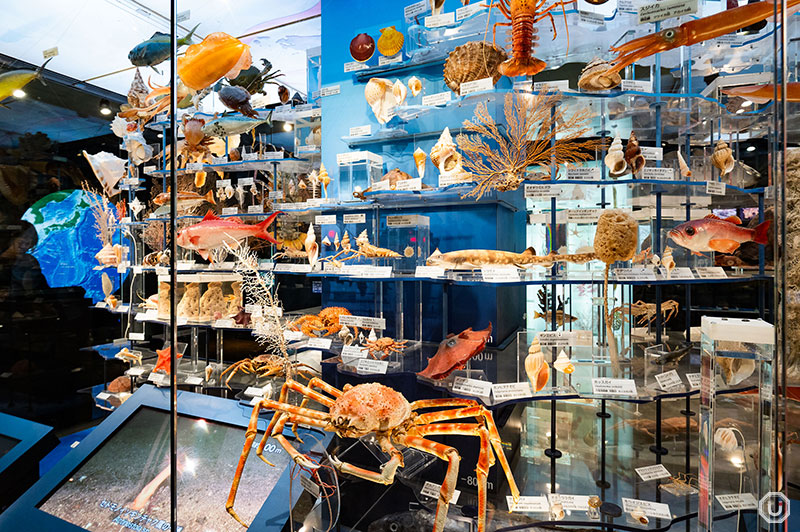
Exhibits at the Japan Gallery
The theme of the Global Gallery is the “History of the Japanese Islands. Exhibits here showcase the evolution of life, how species have adapted and gone extinct in response to environmental changes, and the development of human knowledge.
With large-scale models, specimens, and immersive video exhibits, the Global Gallery offers an engaging and educational experience. The museum is designed to spark intellectual curiosity, with interactive displays scattered throughout.
Additionally, in the special exhibition hall on the first basement floor, special exhibitions are held about three times a year.
With their careful theme setting and exhibition methods, the displays are easily understood by the general public, and their unique perspectives often attract a lot of public attention.
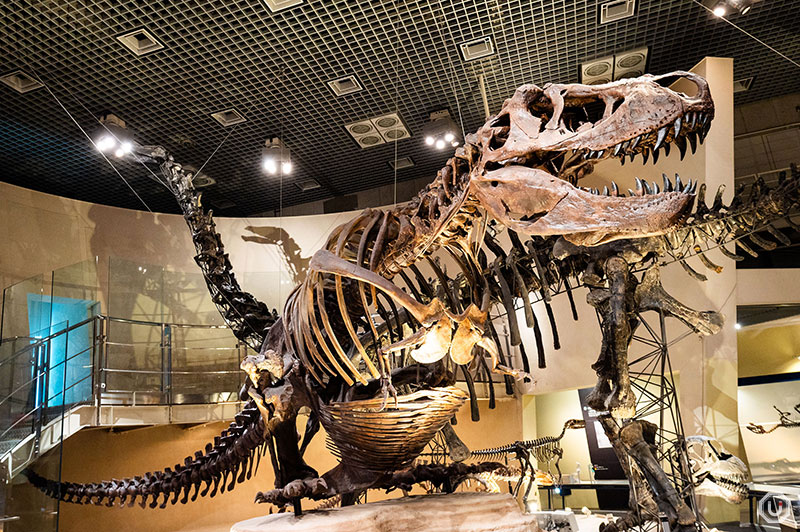
Exhibits at the Global Gallery
Must-see exhibits: hands-on experiences and iconic displays
The National Museum of Nature and Science has about 25,000 permanent exhibition items.
Among them, the reconstructed skeleton of a Futabasaurus (a genus of plesiosaur) that is displayed in the “History of the Japanese Islands” exhibition room in the north area on the 3rd floor of the Japan Gallery is a must-see.
As soon as you enter the room, the massive Futabasaurus reconstruction grabs your attention with its overwhelming presence. Visitors can imagine what it must have been like when it swam through vast prehistoric oceans.
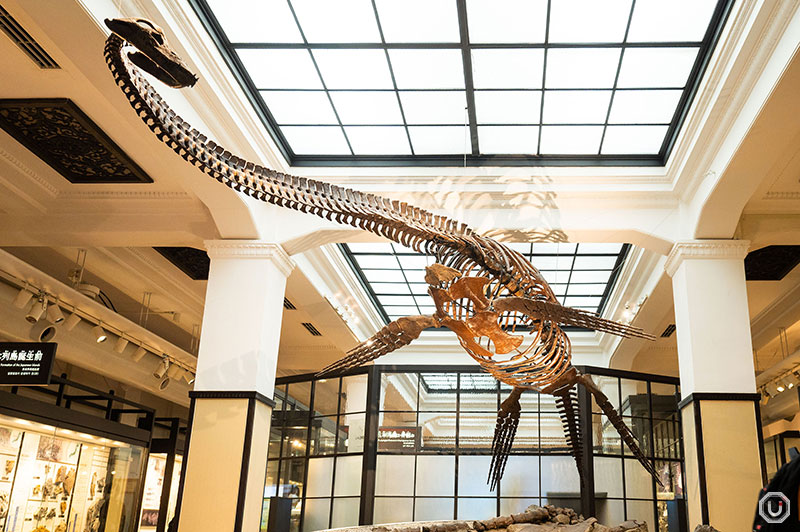
Reconstructed skeleton of Futabasaurus
Another attraction to see when visiting the National Museum of Nature and Science is the taxidermied specimen of the real Hachiko, the famous loyal dog.
Hachiko, who is still to this day beloved as a symbol of Shibuya, was an Akita dog, a type of Japanese dog native to Akita Prefecture.
His taxidermied form is displayed in the north of the second floor of the Japan Gallery, alongside other Japanese dog breeds, as part of an exhibit on companion animals.
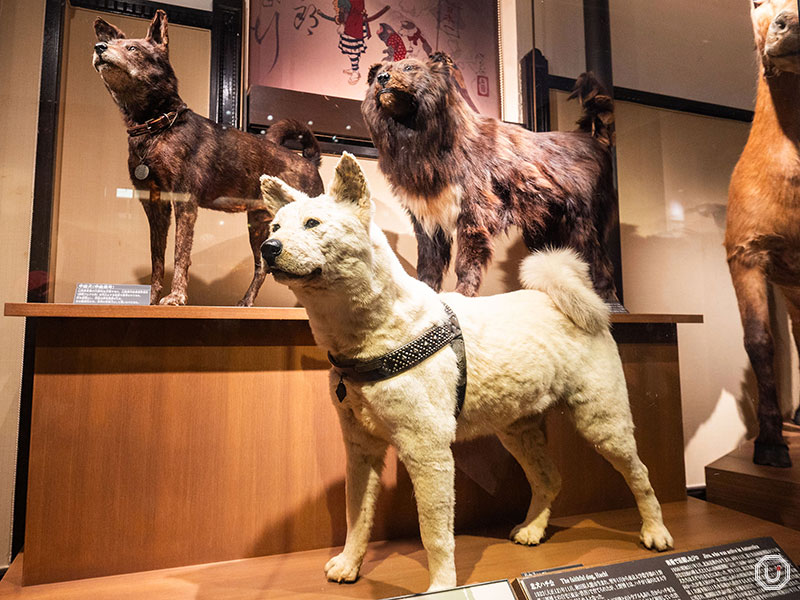
Taxidermied Hachiko
National Museum of Nature and Science Information
| Facility name | 国立科学博物館 National Museum of Nature and Science |
|---|---|
| Address | 7-20 Ueno Kōen, Taito-ku, Tokyo
|
| Phone number | 050-5541-8600(”Hello Dial” general information) |
| Hours | 9:00-17:00(last admission is 30 minutes before closing) *opening hours for special exhibitions should be checked on each exhibition’s official website |
| Closed | Monday (or the following day if Monday is a national holiday), New Year’s holidays |
| Admission fee | General admission/adults 630 JPY Free for high school students (including technical college students) up to the first March 31 after turning 18 and those 65 and older *special exhibitions require an additional fee |
| Pamphlets | Available with Japanese, English, Chinese, Korean, and Thai language |
| Exhibit audio guides | Available with Japanese, English, Chinese, and Korean language |
The Tokyo National Museum
The Tokyo National Museum features six exhibition halls showcasing a vast array of cultural treasures from Japan and East Asia.
With approximately 120,000 items in its collection, including 89 National Treasures and 650 Important Cultural Properties, it’s safe to say the museum boasts one of Japan’s finest collections.
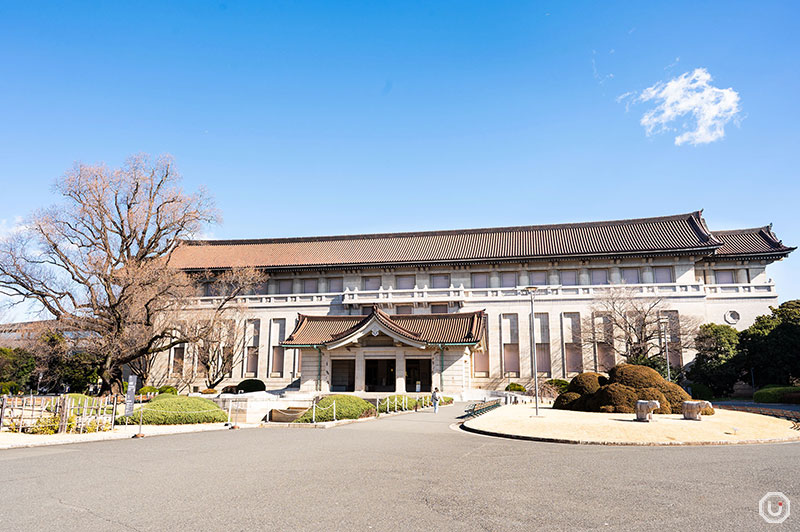
The Japanese Gallery of Tokyo National Museum
A standout feature of the Tokyo National Museum is its frequent display changes, which occur about 400 times a year.
The museum’s Japanese Gallery exhibits Japanese art, while the Heiseikan focuses on archaeological artifacts from Japan, and the Asian Gallery specializes in art from East Asia. The Gallery of Horyuji Treasures is home to priceless treasures donated by the Hōryū-ji Temple, among others. Nearly every week, one of the museum’s exhibition halls undergoes a change.
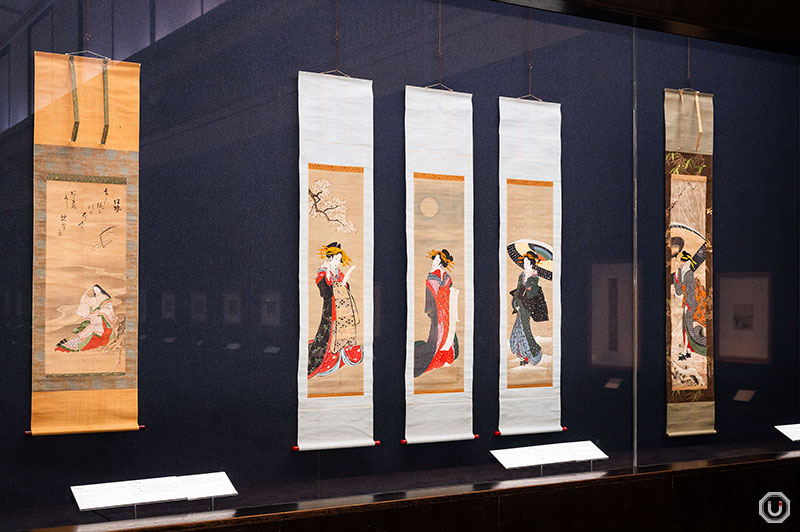
Ukiyo-e works displayed in Room 10 of Tokyo National Museum’s Japanese Gallery
The collection grows every year through purchases and donations, and being able to encounter new exhibits whenever you visit is a unique feature visitors can enjoy at the museum.
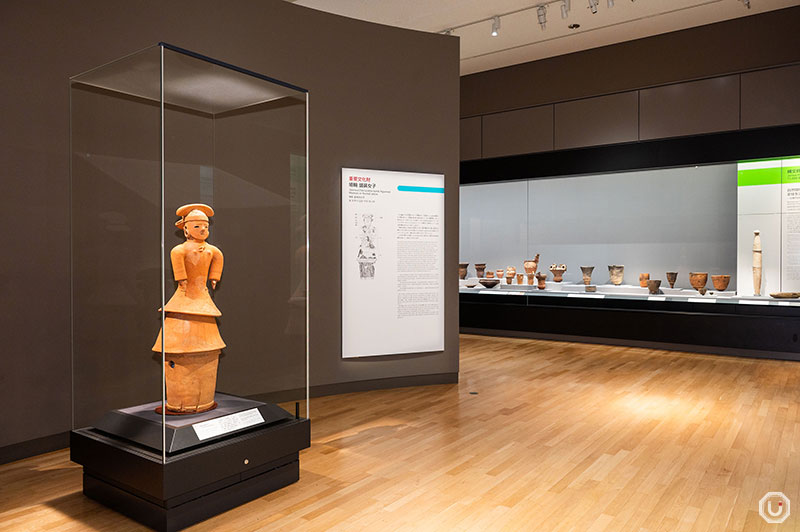
Haniwa warrior tomb sculpture displayed in the Heiseikan

Chinese Buddhist sculpture displayed in the Asian Gallery
The interactive corners for deepening understanding of Japanese culture are all ingeniously designed.
In the interactive ukiyo-e (traditional Japanese woodblock paintings and prints) corner in Room T4 of the Japanese Gallery, you can experience the mechanism of woodblock printing, which developed as a method for mass-producing ukiyo-e, by using stamps. The finished ukiyo-e prints can be taken home, making this interactive corner popular with visitors of all ages.
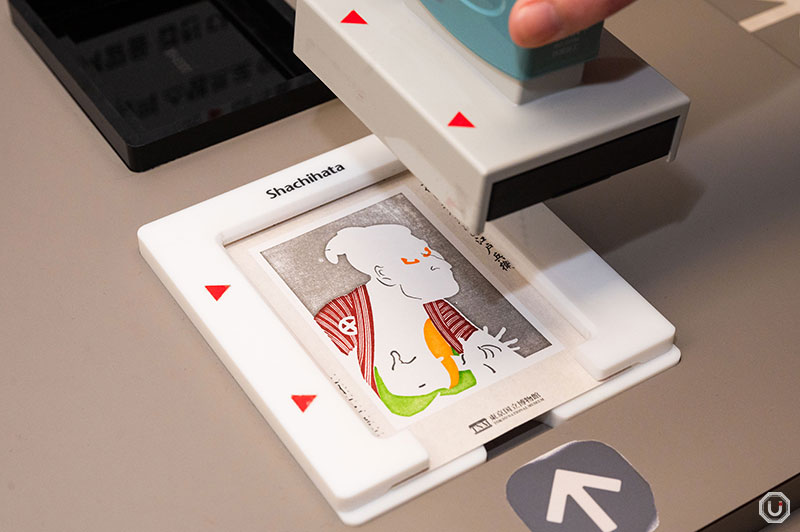
Finished ukiyo-e stamps can be taken home
Close-up with Japan’s National Treasures
Among its vast collection, the Tokyo National Museum’s National Treasure Gallery on the second floor of the Japanese Gallery is a standout exhibit.
Here, carefully selected works from National Treasures owned by or entrusted to the Tokyo National Museum are displayed.
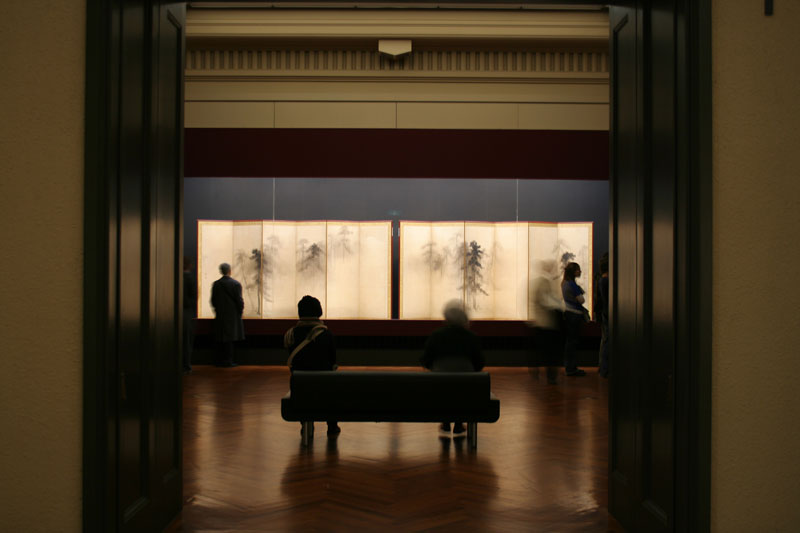
View of an exhibition in Room 2, National Treasure Gallery, in the Japanese Gallery of Tokyo National Museum / © Tokyo National Museum
Not only can you take a close look at these precious National Treasures, but the viewing space, which is quite spacious relative to the size of the exhibits, is impressive.
The National Treasure Gallery is said to have been designed with ample space relative to the size of the works so that visitors can appreciate them quietly in a relaxed environment.
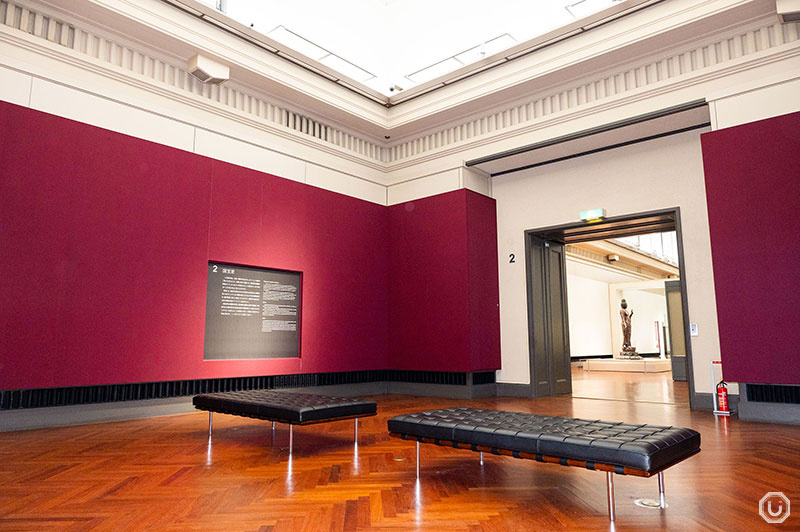
The National Treasure Gallery’s interior
Given the vast grounds and extensive exhibits of the museum, it takes considerable time to view everything. It is recommended to allow at least four hours for viewing.
If time allows, visitors can also enjoy the museum’s garden, where they can experience seasonal plants and traditional Japanese architecture that evokes the spirit of the classic Japanese wabi-sabi aesthetic.
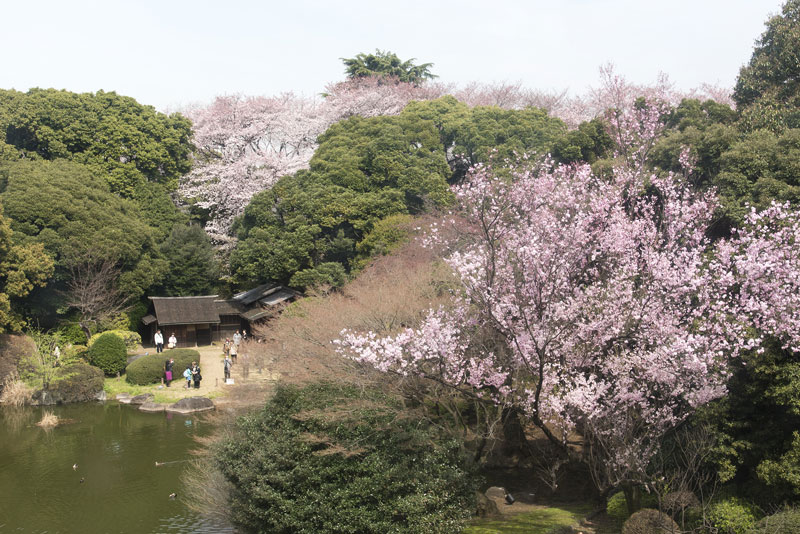
Garden in the spring / © Tokyo National Museum
Get exclusive goods at museum shops
The Tokyo National Museum is filled with a wide lineup of exclusive goods that can only be obtained here!
With 2,000 varieties, as abundant as the exhibits themselves, you can find plenty of attractive souvenirs.
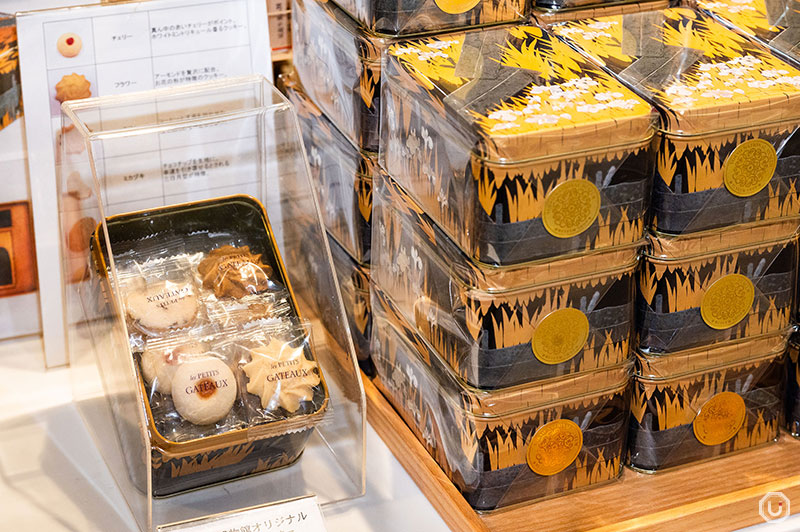
“八橋蒔絵螺鈿硯箱缶入クッキー,” Writing Box with Eight Bridges Canned Cookies 1,080 JPY (tax included)
These “Writing Box with Eight Bridges Canned Cookies” are particularly popular in the museum shops.
They are an artistic and playful item that adapts the National Treasure “Yatsuhashi Makie Raden Suzuribako” (Writing Box with Eight Bridges) by Ogata Kōrin into a cookie tin.
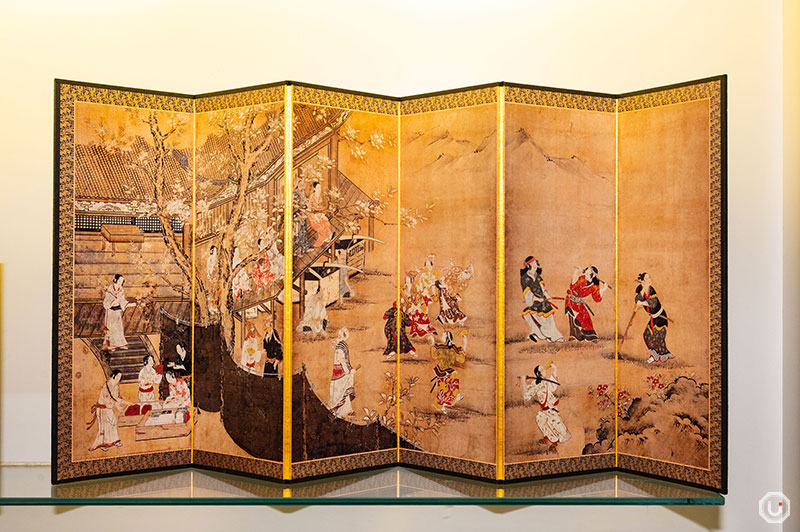
“ミニチュア屏風 花下遊楽図屏風,” Miniature Folding Screen: Merrymaking Under the Cherry Blossoms 9,900 JPY (tax included)
Miniature folding screens are recommended for those who want to display their travel souvenirs as home decor.
The “Aizu Lacquerware Sake Cup” decorated with cherry blossoms is available only at the Tokyo National Museum.
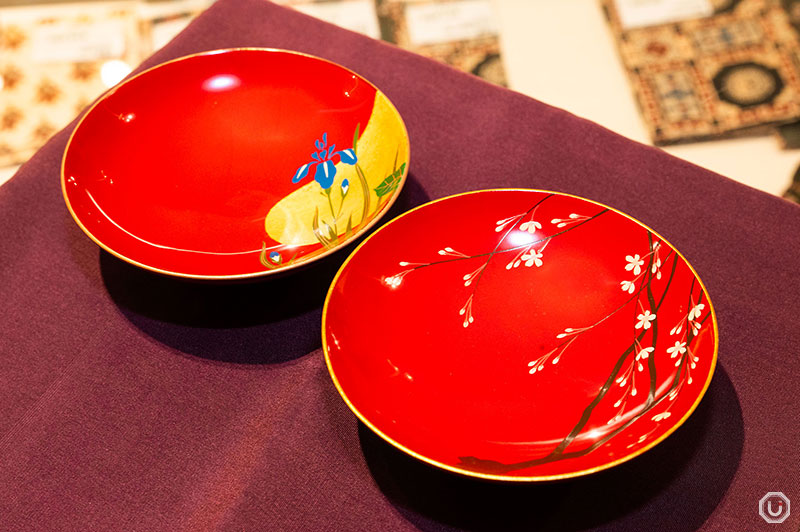
“会津塗 盃 四季花鳥図巻,” Aizu Lacquerware Sake Cup: Birds and Flowers of the Four Seasons from 9,900 JPY (tax included)
There are also many goods that are collaborations between Japanese traditional crafts and the Tokyo National Museum.
The Aizu lacquerware sake cups, a traditional craft from the Aizu region of Fukushima Prefecture, are so beautiful they can be considered works of art.
The patterns on the cups are hand-painted one by one by Aizu lacquerware artisans, and five different types are available.
Tokyo National Museum Information
| Facility name | 東京国立博物館 Tokyo National Museum |
|---|---|
| Address | 13-9 Ueno Kōen, Taito-ku, Tokyo
|
| Phone number | 050-5541-8600(”Hello Dial” general information) |
| Hours | Mon-Thurs. & Sun. 9:30-17:00(last admission is 30 minutes before closing) Fri-Sat. 9:30-20:00(last admission is 30 minutes before closing) *special exhibitions require an additional fee |
| Closed | Monday (or the following day if Monday is a national holiday), New Year’s holidays |
| Admission fee | General admission 1000 JPY University students 500 JPY Free for high school students and younger, as well as those under 18 and 70 or older *special exhibitions require an additional fee |
| Pamphlets | Available with Japanese, English, Chinese (Traditional and Simplified), Korean, Spanish, German, and French language |
| Exhibit audio guides | Available with Japanese, English, Chinese, and Korean language |
The National Museum of Western Art
The National Museum of Western Art, the only national museum in Japan dedicated entirely to Western art, first opened its doors in 1959.
Its origins trace back to the efforts of entrepreneur Kōjirō Matsukata, a prominent figure from the Meiji era.
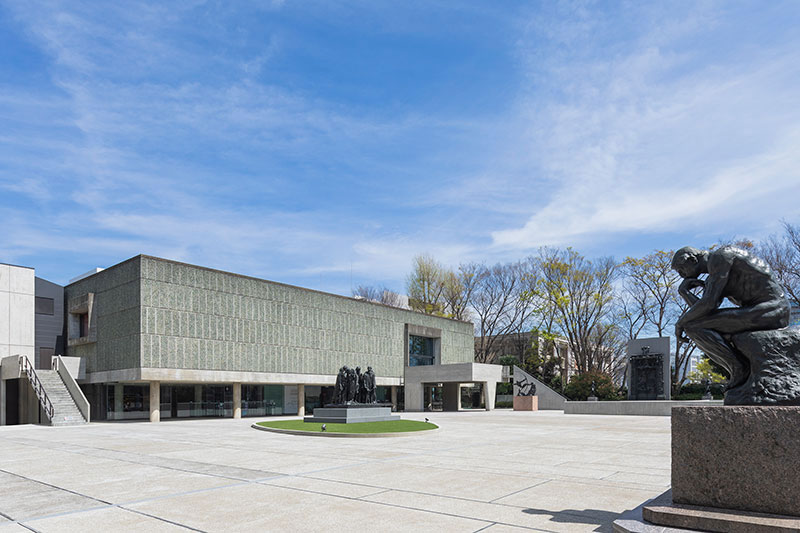
© The National Museum of Western Art
Motivated by his desire to expose young Japanese painters to authentic Western art, Mr. Matsukata amassed a collection estimated at around 10,000 pieces.
The National Museum of Western Art’s collection is based on the art works collected by Mr. Matsukata at that time, and as of 2025, the museum owns more than 6,000 works.
The collection spans from the Middle Ages to the 20th century, including Western paintings, modern French sculpture centered on Rodin, as well as drawings, prints, manuscripts, and crafts.
National Museum of Western Art’s top exhibits: just like looking at an art book
Led by Auguste Rodin’s The Thinker (Enlarged), the content of the Western art collection is unparalleled in Japan.
Among its impressive paintings are Claude Monet’s Water Lilies and Water Lilies, Reflection of Weeping Willows, the latter of which gained significant attention when it was unveiled by the museum in 2018.

© The National Museum of Western Art
Additionally, the collection features masterpieces such as Two Sleeping Children by Peter Paul Rubens, Roses by Vincent van Gogh, and Painting by Joan Miró—each an essential work in the history of Western art.
These permanent exhibits works are rotated several times a year.
The National Museum of Western Art is not only rich in its collection but the building itself can be considered a work of art.
Designed by renowned 20th-century French architect Le Corbusier (1887–1965), the structure was designated a UNESCO World Heritage Site in July 2016, marking its historical significance.
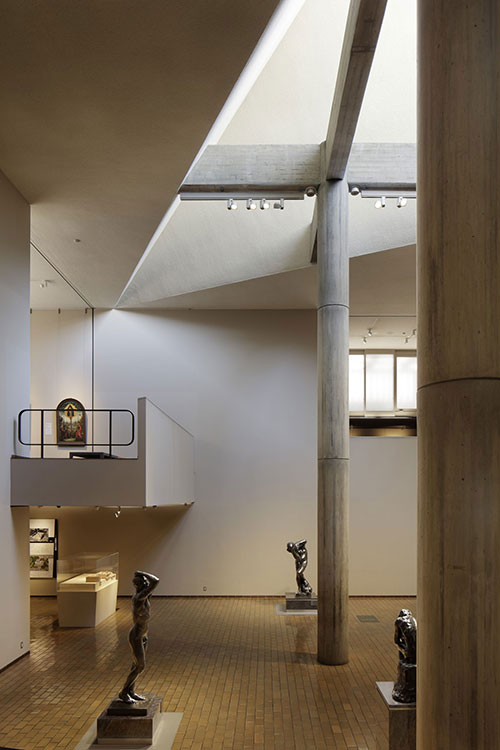
© The National Museum of Western Art
Museum goods available at The National Museum of Western Art
The museum’s shop offers an array of items inspired by its renowned collection, including products themed around The Thinker and van Gogh’s artwork.
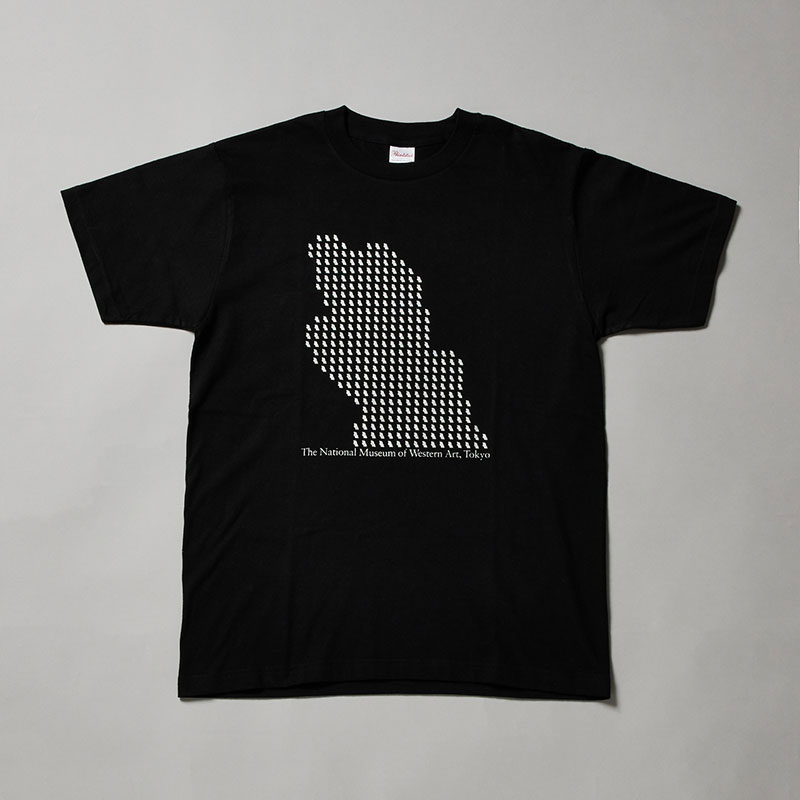
© The National Museum of Western Art / “Tシャツ 考える人,” The Thinker T-shirt 3,350 JPY (tax included)
One of its standout products is an exclusive The Thinker T-shirt, available in white and black, and offered in M and L sizes.
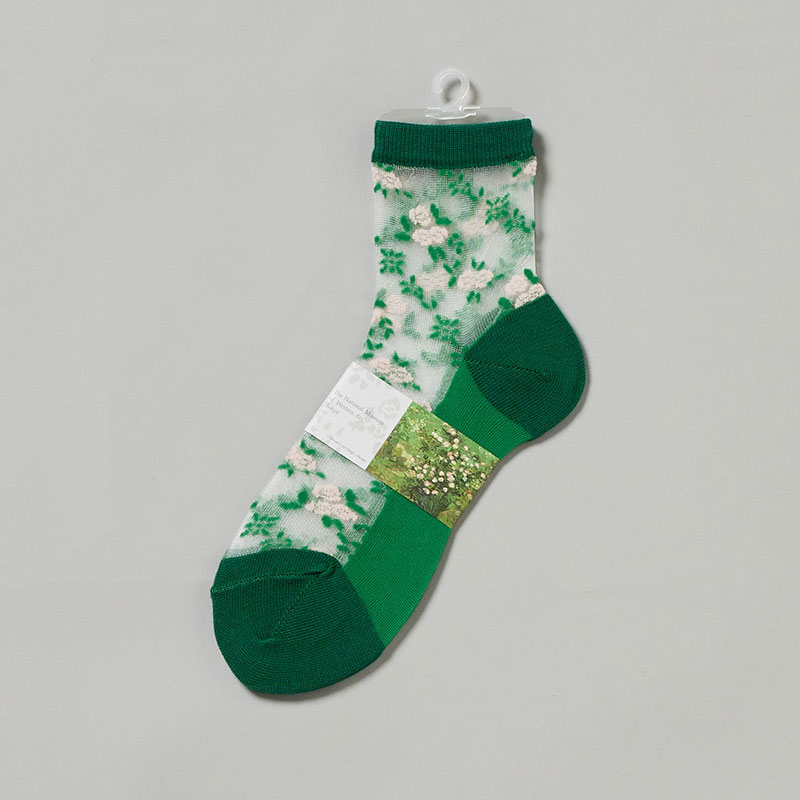
© The National Museum of Western Art / “靴下シースルー ばら・緑,” Sheer Socks Roses (Green) 1,540 JPY (tax included)
The socks featuring van Gogh’s masterpiece Roses have a delicate design combined with sheer material.
These socks, perfect for adding a stylish accent to your footwear, are also available in a design inspired by Monet’s Water Lilies.
The National Museum of Western Art Information
| Facility name | 国立西洋美術館 The National Museum of Western Art |
|---|---|
| Address | 7-7 Ueno Kōen, Taito-ku, Tokyo
|
| Phone number | 050-5541-8600(”Hello Dial” general information) |
| Hours | Tues.-Thurs. & Sun. 9:30-17:30(last admission is 30 minutes before closing) Fri.-Sat. 9:30-20:00(last admission is 30 minutes before closing) |
| Closed | Monday (Except when a national holiday falls on Monday. In this case, the museum is open on the holiday and is closed the next day), New Year’s holidays |
| Admission fee | General admission 500 JPY University students 250 JPY Free admission for high school students (ages 16 to 18) and younger, those under 18, those aged 65 and older, and individuals with physical or mental disabilities (including one accompanying person *special exhibitions charge different admission prices |
| Pamphlets | None |
| Exhibit audio guide | Available with Japanese, English, Chinese, and Korean language |
